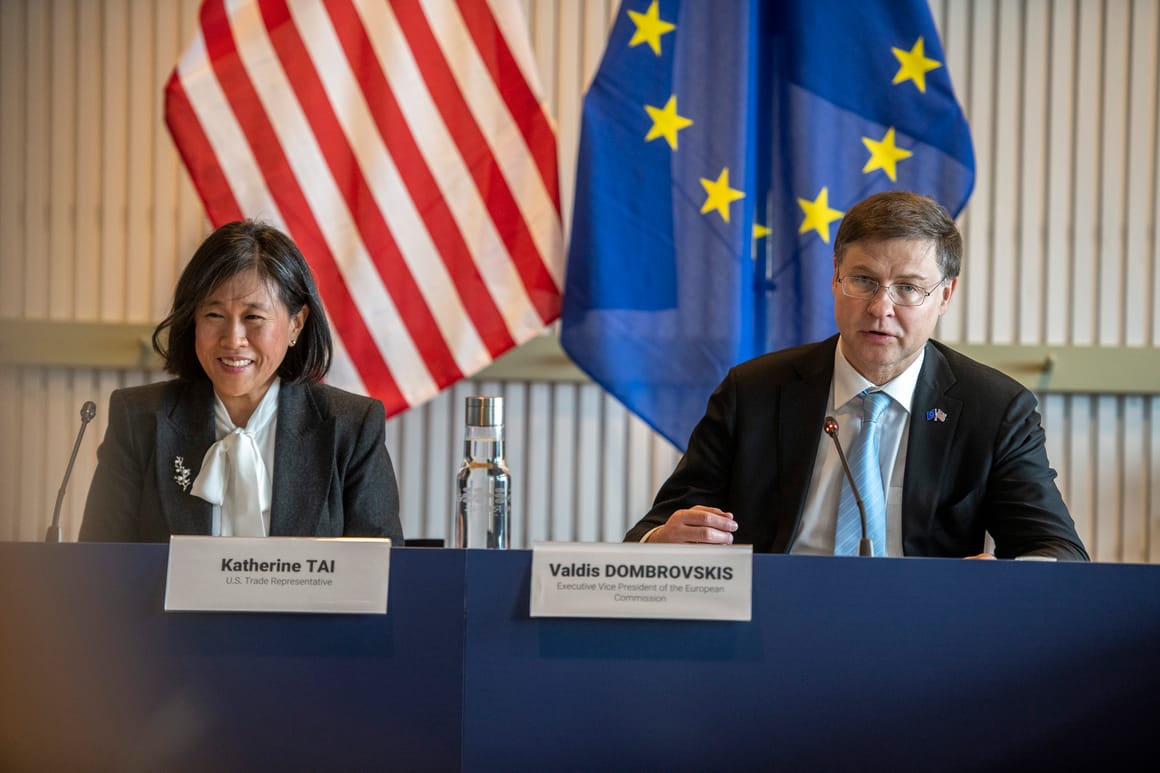U.S. Amps up Trade War with Tariff Hikes on EU, Mexico
Over the weekend, the U.S. President issued a declaration of intent to enforce a 30% tariff on goods entering the U.S. from Mexico and the European Union beginning on August 1. This decision comes in the wake of unsuccessful trade discussions with two of the country’s significant trade partners. The planned tariffs, split into separate notifications and delivered to counterparts Ursula von der Leyen, President of the European Commission, and Claudia Sheinbaum, President of Mexico, represent an intensification of the ongoing trade disputes that have shaken global markets and upset U.S. allies.
Both the European Union and Mexico, prominent trade affiliates of the U.S., termed the proposed tariffs as unjust and destabilizing. However, they have committed to prolong negotiations with the U.S. with hopes of achieving a more comprehensive trade agreement prior to the proposed August 1 deadline. Mexican President Claudia Sheinbaum remains confident of reaching a compromise, emphasizing the need for stoic diplomacy in such circumstances.
During an event held in the Mexican state of Sonora, President Sheinbaum expressed the importance of knowing the limits of negotiation. She stressed that while cooperation with the U.S. was possible in many respects, the integrity and sovereignty of Mexico would never be compromised. President Sheinbaum’s remarks underline the sensitive balance that must be struck in these critical discussions.
Similar notices announcing blanket tariff rates between 20% and 50% were dispatched to 23 additional trading partners this week, including Canada, Brazil, and Japan. A 50% tariff has also been designated for copper imports. The U.S. President has separately mentioned that a current 50% tariff for steel and aluminum imports and a 25% tariff for auto imports would continue to sustain.
The looming threat of tariffs come with a grace period permitting a targeted group of nations to arrive at agreements that could potentially decrease the imminent tariffs. Investors and economic analysts are also noticing a recurrent trend where the President often retreats from proposed tariffs—an interesting pattern that continues to arise amid the chaos.
Trump’s recent barrage of tariff-related notifications indicate a resurgence of the assertive trading stance he originally exhibited in April. This stance led to a market downturn after a surge of reciprocal tariffs against trading associates, only to be delayed subsequently by the White House. However, with the stock market hitting all-time highs and a sturdy national economy, the President appears unwavering in his aggressive trade strategy.
Trump had planned to employ a 90-day reprieve in April to secure numerous trade agreements; as of now, he has only been able to establish skeleton agreements with China, Britain, and Vietnam. The European Union, a collective of 27 nations, had been aiming to achieve a comprehensive trade pact with the United States.
In his communication to the EU, President Trump demanded that Europe drop its tariffs entirely. The European Union, he insisted, should deliver absolute market access to the United States, devoid of any tariff application against the U.S. This, he believes, would aid in trimming the striking trade deficit between both regions.
In response, Ursula von der Leyen, European Commission President, warned that the proposed 30% tariffs would negatively impact essential transatlantic supply chains, harming both American and European businesses, consumers, and critical sectors such as healthcare. While she affirmed a commitment to ongoing negotiations, von der Leyen also stated the EU would take necessary actions to protect its economic interests, including proportional countermeasures if the need arises.
Mexico’s economic ministry released a statement addressing the planned tariffs, expressing their disagreement and declaring it as an unjust move. Trump, in his note, criticized Mexico for their insufficient measures taken to secure the border and combat trafficking cartels, aiming to tarnish North America’s image.
China stands as the prominent origin of the chemicals required to produce the opioid fentanyl. As per U.S. authorities, only a meager 0.2% of all seized fentanyl in the nation originates from the Canadian border. In contrast, the majority is traced back to the U.S.-Mexico border.
Mexico exports more than 80% of its goods to the U.S., with free trade being a pivotal factor in making it the leading U.S. trade associate. The initial plans of the European Union to secure a comprehensive trade agreement have been downsized. Recent efforts are targeted at acquiring a broader framework deal, akin to the agreement brokered by Britain, leaving the finer details to be settled through negotiations.
Trump’s continuous stream of tariff orders since his return to office has yielded billions of dollars per month in fresh revenue for the U.S., albeit stirring diplomatic strains with several of its oldest associates. Suggestions from the Japanese Prime Minister Shigeru Ishiba and other European allies to reevaluate their dependencies on Washington highlight the ripple effect that the ongoing trade disputes are having worldwide.

